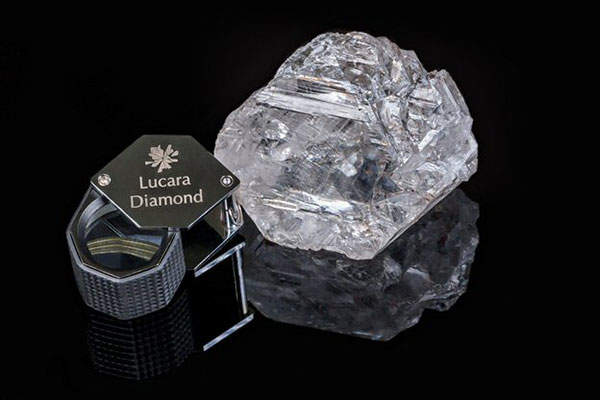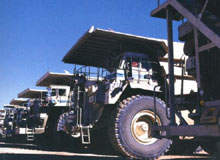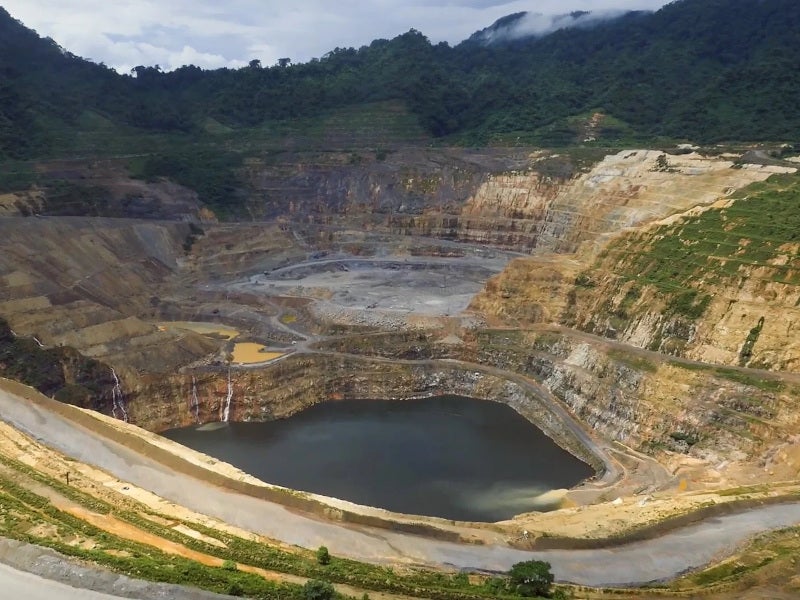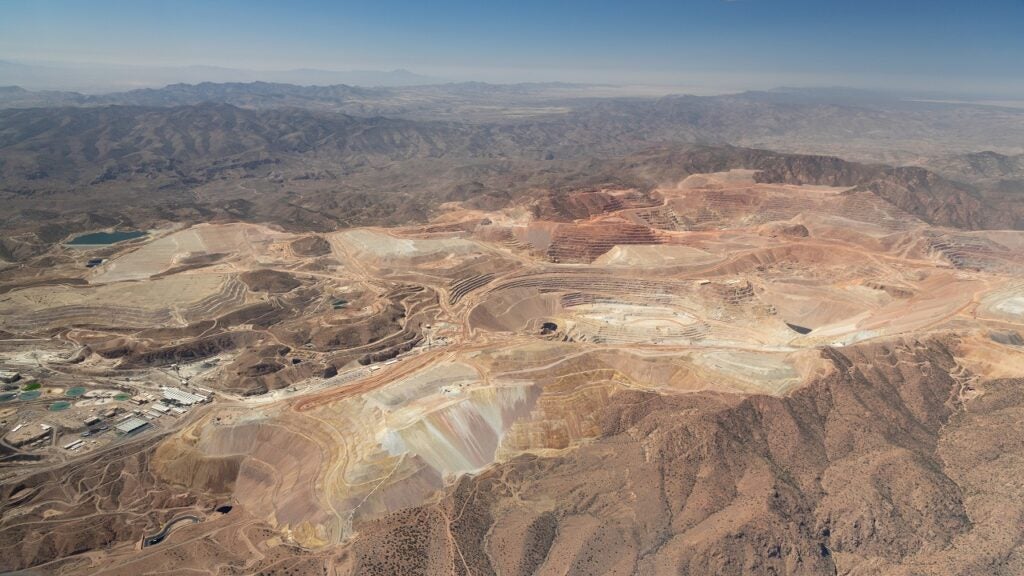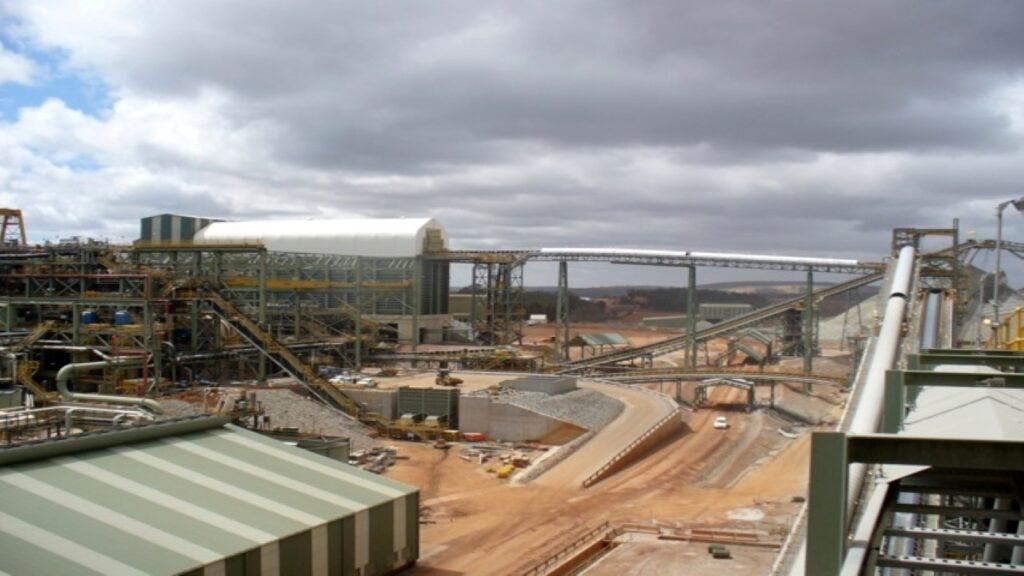The Karowe Diamond Mine (formerly the AK6 Project), a producer of high-quality rough diamonds, is located within the Mining Licence (ML) 2008/6L, in the Orapa / Letlhakane Kimberlite district of north-central Botswana. The mine was developed with an investment of approximately $120m.
Ekati diamond mine, near Lac de Gras in Canada’s North-West Territories, is about 300km north-east of Yellowknife.
The diamond mine is 100% owned by Lucara Diamond through its subsidiary Boteti Mining. The mine construction was completed in March 2012, the commissioning works were completed in April, the first sale of rough diamonds from the mine was achieved in June, commercial production started in July and full production capacity was reached in August 2012.
A total of 218,905 carats (ct) of rough diamonds were sold from the mine in 2012, a total of 438,717ct ($181m) were sold in 2013, while in 2014, a total 412,136ct ($265.8m) were sold out of the total 430,293ct produced by processing 2.42 million tonnes (Mt) of ore. The mine is expected to have a production life of 15 years.
Karowe Diamond Mine Optimisation Project
In 2014, a major plant upgrade project, primarily integrating new large diamond recovery (LDR) X-ray transmissive technology (XRT) machines, was introduced to process harder ore and to improve the recovery of exceptional diamonds. The most significant results from the optimisation project were the recovery of a 1,111ct gem quality, Type IIa diamond, and an 813ct stone and a 374ct stone white diamonds in mid-November 2015.
The 1,110ct diamond, which measures 65mm x 56mm x 40mm in size, is the world’s second biggest gem quality diamond ever to be recovered, the biggest diamond to be recovered through a modern processing facility, and the biggest diamond recovered in Botswana.
Geology
The kimberlite at the diamond mine, named AK6 kimberlite, is interpreted as an opaque, mineral-rich monticellite kimberlite and primarily classified as a volcaniclastic kimberlite. It integrates three coalescing pipes, namely the South Lobe, the Center Lobe and the North Lobe, of which the South Lobe accounts for roughly 75% of the potential resources. The kimberlite body has an area of 3.3ha at the surface and extends over approximately 7ha at a depth of 120m.
Reserves at the record-breaking diamond mine
As of December 2013, the probable reserves based on a depth of 324m were estimated to be 33.1Mt of ore graded at 15.5ct /100t, containing 5.1 million carats (Mct) of diamond.
The remaining indicated resource from surface to a depth of 400m is estimated at 48.07Mt of ore, graded at 16ct/100t, containing 7.61Mct of diamond, whereas the total inferred resource from 400m to 750m is estimated to be 21Mt of ore graded at 14ct/100t, containing 3.04Mct of diamond.
Mining and processing at Boteti Mining’s diamond mine
The single open-pit is mined using conventional drill and blast methods, with truck and shovel operations. The processing plant, with a nameplate capacity of 2.5 million tonnes per annum (mtpa), integrates a primary crusher, a secondary gyratory crusher, an autogenous (AG) mill, an XRT large diamond recovery circuit, a pebble crusher, a bulk sorter circuit, a tertiary crusher, a dense media separation (DMS) plant, a three-staged X-ray recovery section and a water circuit.
Infrastructure at the Karowe diamond mine
The project sources electricity from Botswana Power Corporation’s national grid via the Orapa substation, which is connected to the substation at the mine site by a 25km-long 33kVA overhead power line. The water requirements are met through 16 wells fed by an aquifer at the mine site.
Other infrastructure at the site include an 1,800m airstrip, slimes dam, tailings dams, waste rock dump, administrative offices, a fuel depot, and mine vehicle workshops. The employees are stationed at Letlhakane village.
Contractors involved with the Karowe diamond mine
The mining fleet is owned and operated by Kalcon, who is also responsible for the maintenance of the site’s access road, whereas the processing plant is operated by Minopex. The engineering, procurement, construction and management (EPCM) contractor for the processing plant was DRA Mineral Projects.
The environmental impact assessment (EIA) report for the mine was compiled by Geoflux, whereas the latest mineral resource update was prepared by Mineral Services Canada.

